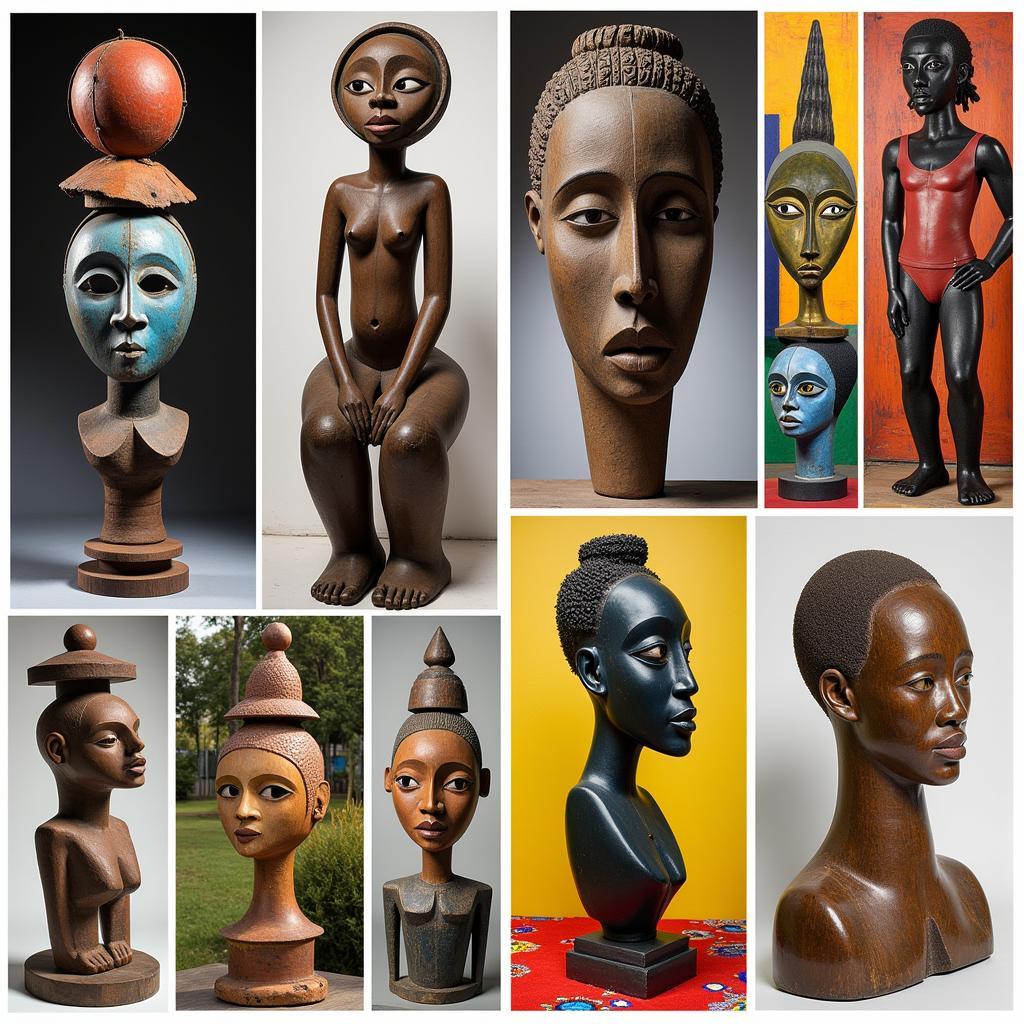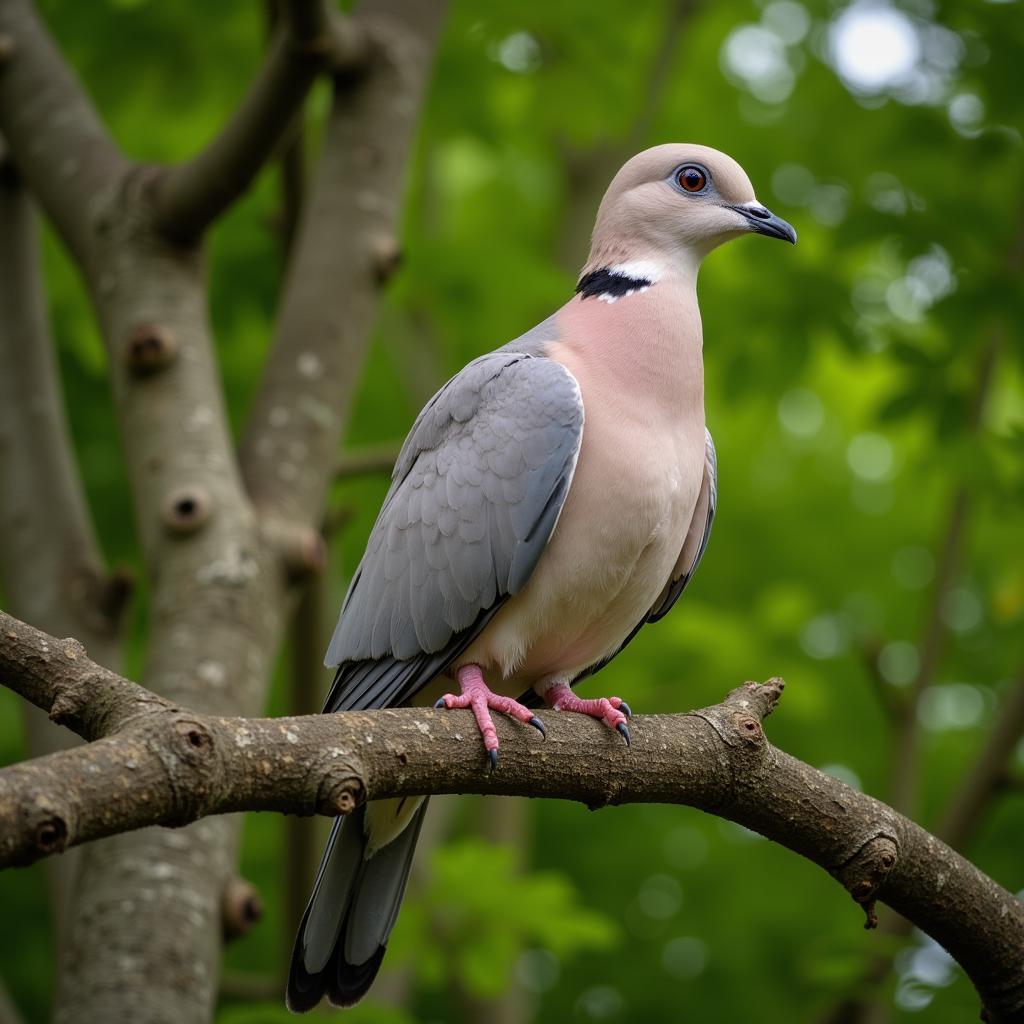Unveiling African Art Paintings: Facts, Styles, and Significance
African art paintings, a vibrant tapestry of cultural expression, offer a unique window into the continent’s rich history, diverse traditions, and profound spiritual beliefs. From ancient rock art to contemporary masterpieces, these captivating works showcase the ingenuity and creativity of African artists across generations. Explore the fascinating facts surrounding African art paintings, delving into their styles, symbolism, and enduring legacy. african culture art
Exploring the Diverse World of African Art Painting Styles
African art paintings are far from monolithic. Diverse styles and techniques flourish across the continent, each reflecting the unique environment, cultural practices, and artistic sensibilities of its people. Ethiopian religious art, for example, is renowned for its vibrant colours and iconic depictions of biblical figures, while the Ndebele people of South Africa are celebrated for their intricate geometric patterns adorning their homes and artworks.
- West African Art: Characterized by bold colors, symbolic imagery, and intricate patterns often reflecting spiritual beliefs and societal values.
- East African Art: Known for its vibrant Tingatinga paintings, featuring stylized animals and bold outlines.
- Southern African Art: Encompasses a range of styles, from the geometric designs of Ndebele art to contemporary expressions exploring social and political themes.
- Central African Art: Often incorporates natural materials and focuses on ancestral figures and masks, playing a significant role in traditional ceremonies.
- North African Art: Influenced by Islamic art, featuring intricate calligraphy, geometric designs, and vibrant tile work.
 West African Art Paintings: Exploring Facts and Symbolism
West African Art Paintings: Exploring Facts and Symbolism
Unmasking the Symbolism in African Art Paintings Facts
Symbolism is integral to African art. Every color, shape, and motif carries meaning, often referencing spiritual beliefs, ancestral stories, or social values. For example, the spiral, a recurring motif, often symbolizes growth, continuity, and the cyclical nature of life. Similarly, animals, often depicted in stylized forms, hold symbolic significance, representing qualities like strength, wisdom, or fertility.
What do masks symbolize in African art? Masks, often used in ceremonial dances and rituals, represent spirits, ancestors, or deities. They are not merely decorative objects but powerful conduits to the spiritual realm.
African Art Paintings: More Than Just Aesthetics
African art paintings are not simply decorative objects. They play a vital role in cultural ceremonies, spiritual practices, and social commentary. From masks used in initiation rites to murals depicting historical events, these artworks are deeply embedded in the fabric of African Life. They serve as powerful tools for storytelling, education, and preserving cultural heritage.
Dr. Anika Musau, a renowned art historian specializing in African art, notes, “African art is not static. It is a living tradition that continues to evolve, reflecting the changing social, political, and spiritual landscape of the continent.”
The Enduring Legacy of African Art Paintings
African art paintings have had a profound impact on the global art world. From inspiring modernist movements like Cubism and Fauvism to influencing contemporary artists across the globe, the vibrant colors, bold forms, and powerful symbolism of African art continue to resonate. The unique aesthetic and rich cultural narratives embedded within these works challenge conventional artistic norms and offer new perspectives on art and its role in society. african figurine women sketches
 Influence of African Art Paintings on Modern Art
Influence of African Art Paintings on Modern Art
Conclusion: Appreciating the Rich Tapestry of African Art Paintings
African art paintings are a testament to the continent’s rich artistic heritage. From ancient rock art to contemporary masterpieces, these works offer a fascinating glimpse into the diverse cultures, spiritual beliefs, and artistic traditions of Africa. By understanding the facts surrounding African art paintings, we can appreciate their significance not only as aesthetic objects but also as powerful expressions of cultural identity and human creativity. Continue your exploration of African art with our curated collection of african art images download.
FAQ
- What are some common themes in African art paintings? Common themes include spirituality, ancestry, nature, daily life, and social commentary.
- What materials are typically used in African art paintings? Materials range from natural pigments and plant dyes to acrylics and oils on canvas.
- Where can I see examples of African art paintings? Museums worldwide, galleries specializing in African art, and online resources offer opportunities to explore these works.
- How can I learn more about African Art Paintings Facts? Books, documentaries, and academic journals dedicated to African art provide in-depth information.
- Are there contemporary African artists working today? Yes, a thriving contemporary African art scene exists, with artists pushing boundaries and exploring new forms of expression.
- What is the significance of color in African art paintings? Colors often hold symbolic meaning, representing elements like earth, water, fire, or conveying emotions and spiritual concepts.
- How does African art reflect the continent’s history? African art often serves as a historical record, depicting events, traditions, and societal changes.
Need help with African Art?
When you need assistance with anything related to African Art, please contact us:
Phone: +255768904061
Email: kaka.mag@gmail.com
Address: Mbarali DC Mawindi, Kangaga, Tanzania
Our customer service team is available 24/7.

